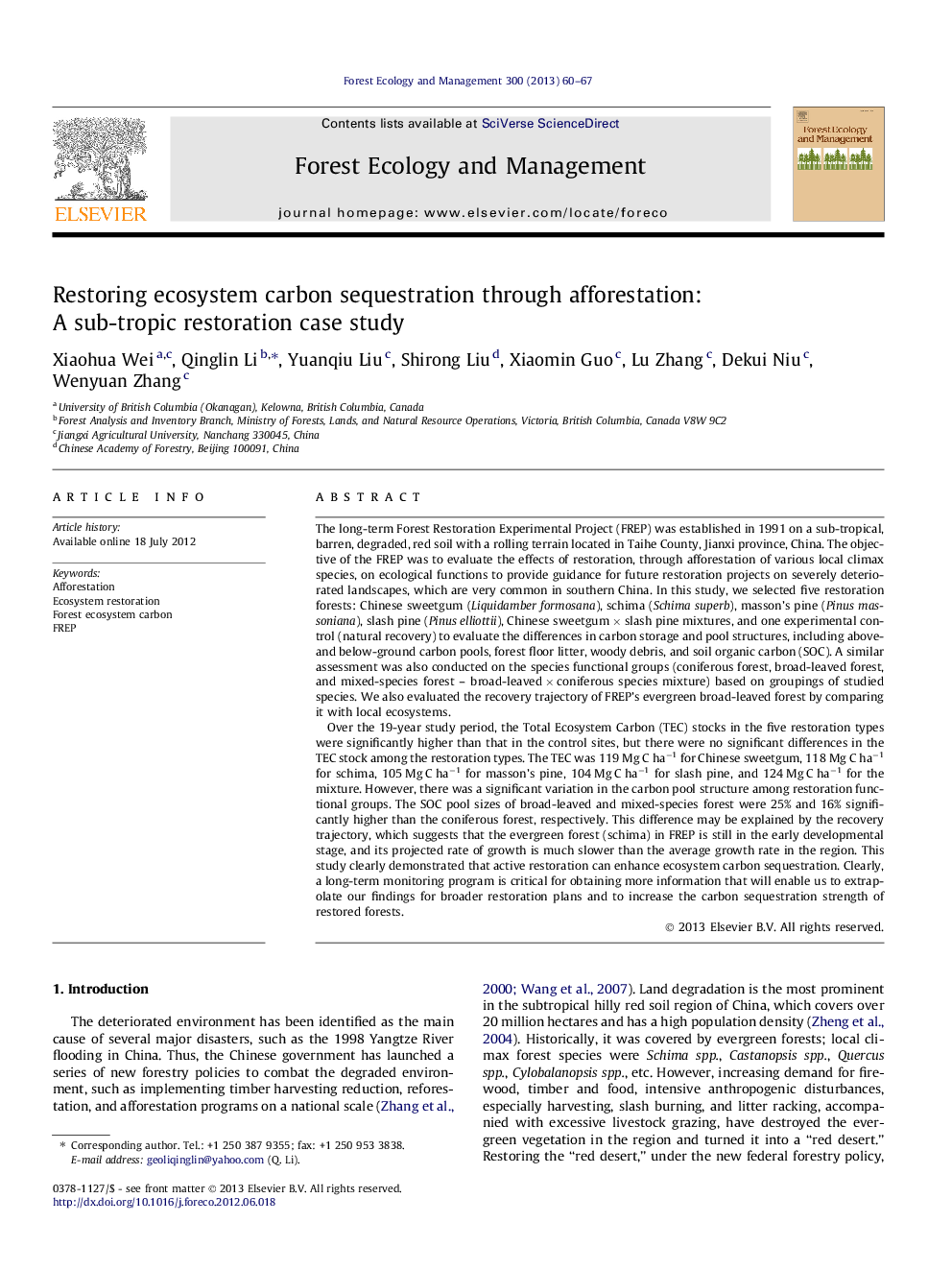| کد مقاله | کد نشریه | سال انتشار | مقاله انگلیسی | نسخه تمام متن |
|---|---|---|---|---|
| 86904 | 159220 | 2013 | 8 صفحه PDF | دانلود رایگان |

The long-term Forest Restoration Experimental Project (FREP) was established in 1991 on a sub-tropical, barren, degraded, red soil with a rolling terrain located in Taihe County, Jianxi province, China. The objective of the FREP was to evaluate the effects of restoration, through afforestation of various local climax species, on ecological functions to provide guidance for future restoration projects on severely deteriorated landscapes, which are very common in southern China. In this study, we selected five restoration forests: Chinese sweetgum (Liquidamber formosana), schima (Schima superb), masson’s pine (Pinus massoniana), slash pine (Pinus elliottii), Chinese sweetgum × slash pine mixtures, and one experimental control (natural recovery) to evaluate the differences in carbon storage and pool structures, including above- and below-ground carbon pools, forest floor litter, woody debris, and soil organic carbon (SOC). A similar assessment was also conducted on the species functional groups (coniferous forest, broad-leaved forest, and mixed-species forest – broad-leaved × coniferous species mixture) based on groupings of studied species. We also evaluated the recovery trajectory of FREP’s evergreen broad-leaved forest by comparing it with local ecosystems.Over the 19-year study period, the Total Ecosystem Carbon (TEC) stocks in the five restoration types were significantly higher than that in the control sites, but there were no significant differences in the TEC stock among the restoration types. The TEC was 119 Mg C ha−1 for Chinese sweetgum, 118 Mg C ha−1 for schima, 105 Mg C ha−1 for masson’s pine, 104 Mg C ha−1 for slash pine, and 124 Mg C ha−1 for the mixture. However, there was a significant variation in the carbon pool structure among restoration functional groups. The SOC pool sizes of broad-leaved and mixed-species forest were 25% and 16% significantly higher than the coniferous forest, respectively. This difference may be explained by the recovery trajectory, which suggests that the evergreen forest (schima) in FREP is still in the early developmental stage, and its projected rate of growth is much slower than the average growth rate in the region. This study clearly demonstrated that active restoration can enhance ecosystem carbon sequestration. Clearly, a long-term monitoring program is critical for obtaining more information that will enable us to extrapolate our findings for broader restoration plans and to increase the carbon sequestration strength of restored forests.
► TEC among five restoration forest types was similar at FREP study site 19 years after establishment.
► A significant variation of C pool structures among functional groups.
► The broad-leaved forests had the highest soil organic carbon storage.
► The forest ecosystem recovery trajectory at FREP sites were in the early successional stage.
► The rate of C sequestration was much slower than the average in the region.
Journal: Forest Ecology and Management - Volume 300, 15 July 2013, Pages 60–67